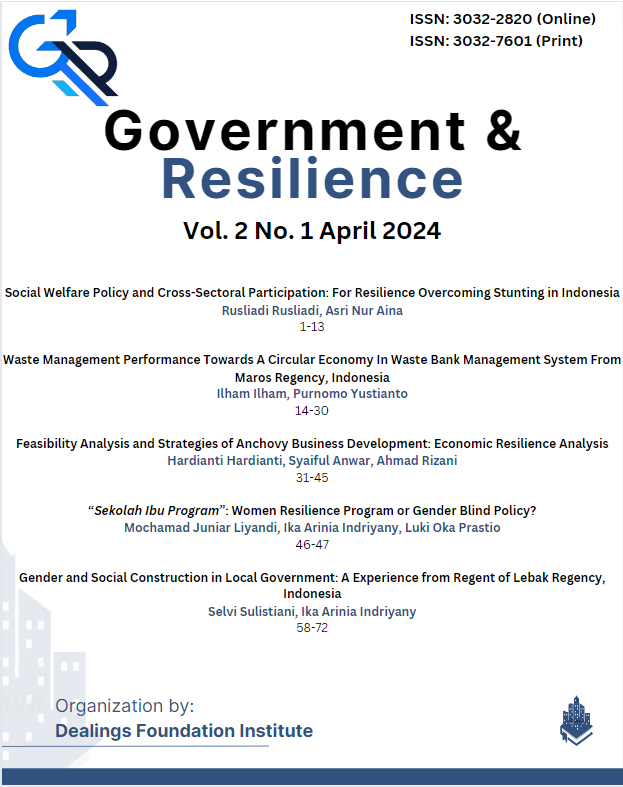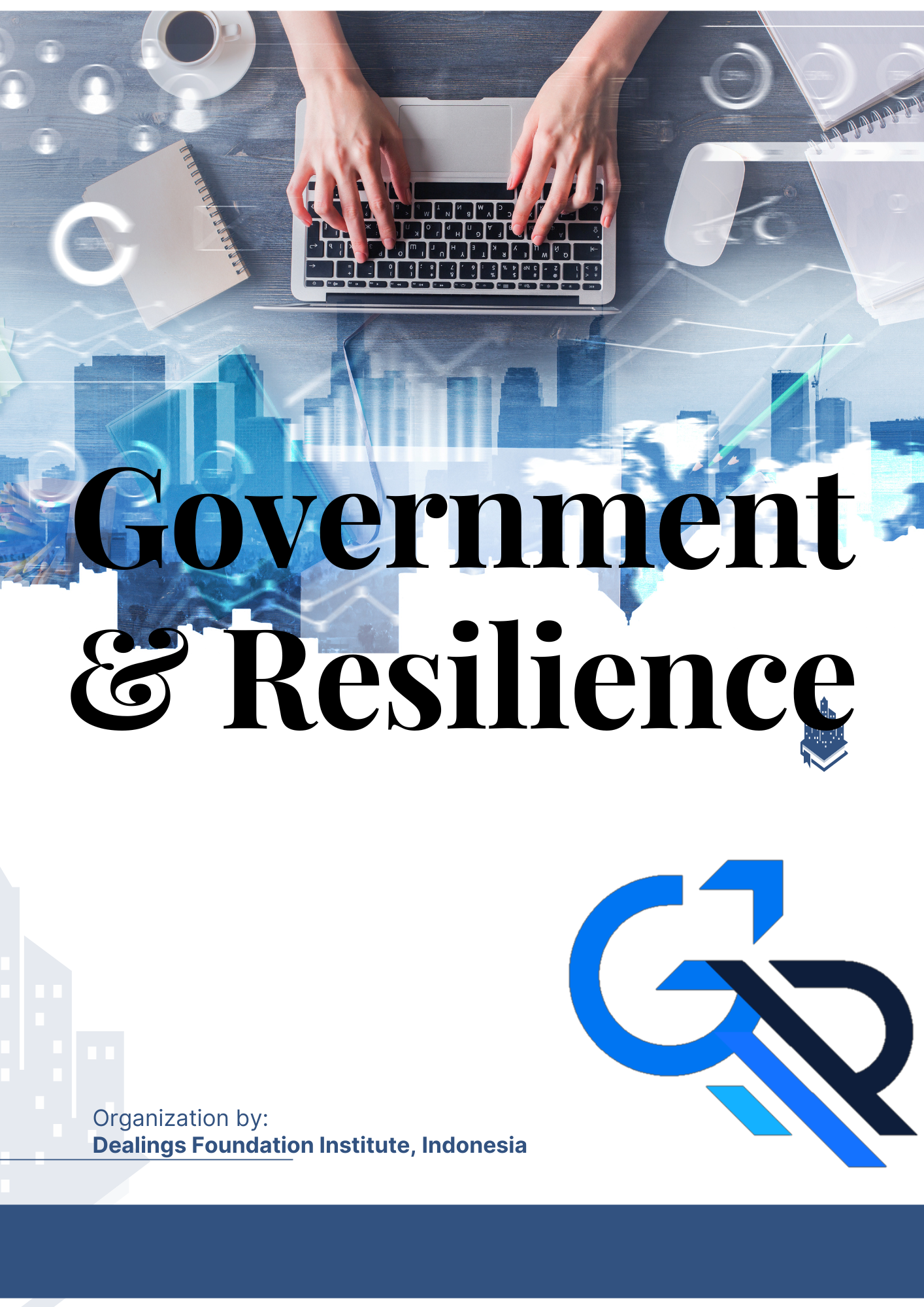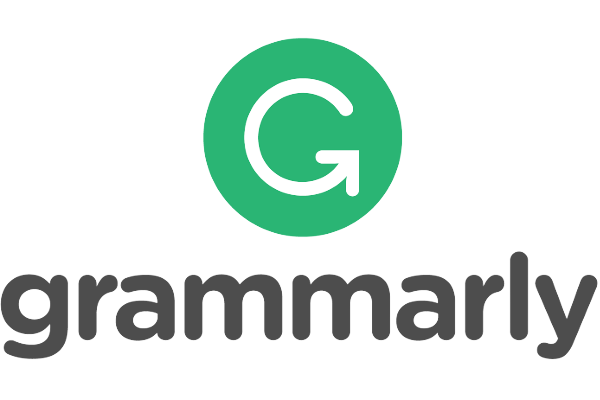Feasibility Analysis and Strategies of Anchovy Business Development: Economic Resilience Analysis
DOI:
https://doi.org/10.62503/gr.v2i1.12Keywords:
Financial Business Feasibility, Development Strategy, SWOT, Anchovy Business, Economic ResilienceAbstract
This study aimed to determine the feasibility analysis and strategies used in the development of anchovy business in Tarakan City. This type of research is descriptive research using quantitative and qualitative approaches. The population and sample in this study were the Usaha Kembang Turi and this study used primary data. Based on the results of this study it is found that financial feasibility was seen from the R/C ratio of 2.40, BCR (Benefit Rate of Return) of 1.40, FRR (Financial Rate of Return) of 65.11%, PPC (Payback Period of Capital) of 1.54 and BEP (Break Even Point) of basic unit price were 118 units and the basic price of the sales was Rp.2, 340,000. Based on the predetermined eligibility criteria, it could be said that the anchovy business in Tarakan City is feasible to operate. The analysis phase was carried out by looking at the internal and external conditions of the company using situation analysis or SWOT analysis through IFAS (Internal Strategic Factors Analysis Summary), EFAS (External Strategic Factors Analysis Analysis), SWOT diagrams, and SWOT matrices. The results of data analysis showed that the strategies used were the SO strategies (Strength-Opportunity).
References
Abdullah. ( 2012). Akuntansi Biaya. Jakarta: Selemba Empat.
Achmad. (2009). Manajemen Sumber Daya Manusia, Cetakan ke 2, Penerbit Faajr, Jakarta.
Adiningsih. (2009). Ekonomi Mikro. Yogyakarta: BPFE.
Adisanjaya, N. (2015). Potensi, Produksi Sumberdaya Ikan Di Perairan Laut Indonesia dan Permasalahannya. Tahun 2015.
Ariadno, M. K., & Amelina, F. (2016). An evaluation of the Indonesian law and policy on small-scale fisheries. Journal of Sustainable Development Law and Policy (The), 7(2), 48-64. https://doi.org/10.4314/jsdlp.v7i2.3
Assauri, S. (2008). Manajemen Pemasaran,Edisi Pertama, Cetakan Kedelapan, Penerbit : Raja Grafindo, Jakarta.
Astawan, M. (2008). Sehat Dengan Hidangan Hewani.Jakarta: Penebar Swadaya.
Barney, J. B. (2007). Gaining and Sustaining Competitive Advantage. New Jersey: Pearson Prentice-Hall.
BPS. (2016). Pertumbuhan Ekonomi Indonesia Triwulan II-2016. BeritaResmi Statistik: No. 74/08/Th.XIX. Kota Tarakan
Burhan. (2006). Metodologi Penelitian Kuantitatif. Edisi 1. Kencana Jakarta Dinas Kelautan dan Perikanan Kota Tarakan 2017. Jakarta.
David, F. R. (2006). Manajemen Strategis. Jakarta, DKI Jakarta, Indonesia: Penerbit Salemba Empat.
Dinas Kelautan Perikanan. (2002). Potensi Ikan Pepija (HaIdrodon nehereus). Kota Tarakan.
Farhanan, I. (2019). Evaluating the Cantrang Ban Regulation in Indonesia (Doctoral dissertation, 부경대학교).
Firdaus, M., Salim, G., Maradhy, E., & Abdiani, I. M. (2013). Analisis pertumbuhan dan struktur umur ikan nomei (Harpadon nehereus) di perairan juata kota Tarakan. Jurnal Akuatika, 4(2). https://journal.unpad.ac.id/akuatika/article/view/3140
Gustanten. (2009). Ikan Teri. http://www. Pandaisikek. Net/index.php?option=com_co ntent&view&id=306&itemid=61. Dikutip20 Oktober 2015
Haryanto, B. (2012). Budi Daya Karet Unggul, Yogyakarta: Pustaka Baru Press
Hendrik. (2011). Analisis Pendapatan Dan Tingkat Kesejahteraan Masyarakat Nelayan Danau Pulau Besar Dan Danau Bawah Di Kecamatan Dayun Kabupaten Siak Propinsi Riau. Jurnal Perikanan Dan Kelautan, 16(1), 21-32.
Husnan, M. (2000). Studi Kelayakan Proyek. Edisi Keempat, Penerbit UPP AMP YKPN, Yogyakarta
Kurniati. (2010). Strategi Pengembangan Kreativitas Pada Anak Usia Taman Kanak-kanak. Jakarta: Kencana Prenada Media Group.
Kusuma, C. D. (2019). Community Assistance in Tarakan the Urban City of North Borneo Province. International Journal of Kybernology, 3(1), 69-78. https://doi.org/10.33701/ijok.v3i1.584
LAN-RI. (2008). Membangun Kepemerintahan Yang Baik, Modul Diklatpim III.
Lord, M., & Chang, S. (2018). Pre-feasibility study of Sabah-North Kalimantan cross-border value chains. [online] available at https://mpra.ub.uni-muenchen.de/86535/ accessed March 2018
Mashudi, A., Saptono, D., & Suharyo, O. S. (2019). Brondong Fisheries Port Development Strategy To Achieve Economic Resilience. The 3rd ICMST-STTAL, 286. http://repository.sttal.ac.id/188/1/33.%20Procedings%20Swot%20Analysis%20To%20Determine%20Competitive%20Strategies%20In%20Xyzhospital%20-%20Copy.pdf#page=297
Mulyadi. (2002). Auditing, Edisi keenam, Cetakan pertama , Jakarta: Salemba Empat
Mulyadi. (2015). Akuntansi Biaya, Edisi 5. Yogyakarta : Sekolah tinggi Ilmu Manajemen YKPN
Neti. (2009). Manajemen keuangan dan permodalan koprasi
Nurmalina. (2009). Studi Kelayakan Bisnis. Bogor: Departemen Agribisnis Fakultas Ekonomi dan Manajemen Institut Pertanian Bogor.
Patittingi, F., Saleng, A., & Lahe, K. (2021, October). Legal protection of marine resources and fishery in the border area. In IOP Conference Series: Earth and Environmental Science (Vol. 860, No. 1, p. 012087). IOP Publishing. https://doi.org/10.1088/1755-1315/860/1/012087
Poniwati, A. (2008). Analisis Faktor-Faktor Yang Mempengaruhi Tingkat Pendapatan Pedagang Pasar Tradisional di Kota Yogyakarta. Yogyakarta: Universitas Gajah Mada.
Rangkuti. (2005). Analisis SWOT : Teknik Membedah Kasus Bisnis. Jakarta : Penerbit PT Gramedia Pustaka Utama.
Rangkuti. (2013). Teknik Membedah Kasus Bisnis Analisis SWOT Cara Perhitungan Bobot, Rating, dan OCAI. Penerbit PT. Gramedia Pustaka Utama. Jakarta.
Riduwan. (2004). Metode Riset. Jakarta : Rineka Cipta
Riyanto. (1995). Dasar-dasar pembelanjaan perusahaan, Edisi keempat, Yogyakarta, Yayasan Penerbit Gajah Mada.
Saputro. (2010). Manajemen Pemasaran Analisis Untuk Perancangan Strategi Pemasaran. Yogyakarta: Unit Penerbit dan Percetakan Sekolah Tinggi Ilmu Manajemen YKPN.
Siregar, B., Suripto, B., Hapsoro, D., Widodo Lo, E., Herewati, E., Kusumasari, L., & Nurolik. (2014). Akuntansi Biaya. Edisi 2. Jakarta: Salemba Empat
Sugeng, S., Sasono, E. J., Utomo, B., & Aryani, Z. (2019, October). Floating Equipment Model Using Anco Fishing Operation For Poor Bedono Fishermen,(Sayung, Demak, Central Java). In International Conference on Maritime and Archipelago (ICoMA 2018) (pp. 321-324). Atlantis Press. https://doi.org/10.2991/icoma-18.2019.68
Sugiyono. (2005). Metode Penelitian Bisnis. Bandung: Alfabeta.
Sugiyono. (2012). Metode Penelitian Kuantitatif Kualitatif dan R&D. Bandung: Alfabeta.
Sugiyono. (2014). Metode Penelitian Pendidikan Pendekatan Kuantitatif, Kualitatif Dan R&D. Bandung: Alfabeta.
Sukirno. (2000). Pengantar Teori Mikroekonomi. Jakarta : Rajagrafindo Persada.
Sukirno. (2010). Makroekonomi. Teori Pengantar. Edisi Ketiga. PT. Raja Grasindo Perseda. Jakarta.
Wanda, F. F. E. (2015). Analisis pendapatan uasahatani jeruk siam (Studi Kasus Di Desa Padang Pangrapat Kecamatan Tanah Grogot Kabupaten Pasar). Ejournal Ilmu Administrasi
Downloads
Published
How to Cite
Issue
Section
License
Copyright (c) 2024 Government & Resilience

This work is licensed under a Creative Commons Attribution-NonCommercial-ShareAlike 4.0 International License.
1. Licence
Use of articles will be governed by the Creative Commons Attribution-NonCommercial-ShareAlike 4.0 International license as currently displayed on the Creative Commons Attribution-NonCommercial-ShareAlike 4.0 International License (CC BY-NC-SA 4.0).
2. Author(s)' Warranties
The author warrants that the article is original, written by the stated author(s), has not been published before, contains no unlawful statements, does not infringe the rights of others, is subject to copyright that is vested exclusively in the author and free of any third-party rights, and that any necessary written permissions to quote from other sources have been obtained by the author(s).
3. User Rights
The spirit of Government & Resilience is to disseminate articles published as freely as possible. Under the Creative Commons license, Government & Resilience permits users to copy, distribute, display, and perform the work. Users will also need to attribute authors and Government & Resilience for distributing works in journals and other media of publication.
4. Rights of Authors
Authors retain all their rights to the published works, such as (but not limited to) the following rights:
1. Copyright and other proprietary rights relating to the article, such as patent rights,
2. The right to use the substance of the article in future works, including lectures and books,
3. The right to reproduce the article for own purposes,
4. The right to enter into separate, additional contractual arrangements for the non-exclusive distribution of the article's published version (e.g., post it to an institutional repository or publish it in a book), with an acknowledgment of its initial publication in this journal (Government & Resilience).
5. Co-Authorship
If the article was jointly prepared by more than one author, any author submitting the manuscript warrants that he or she has been authorized by all co-authors to agree on this copyright and license notice (agreement) on their behalf and agrees to inform his or her co-authors of the terms of this policy. Government & Resilience will not be held liable for anything that may arise due to the author's internal dispute. Government & Resilience will only communicate with the corresponding author.
6. Royalties
Being an open-access journal and disseminating articles for free under the Creative Commons license term mentioned, the author(s) are aware that Government & Resilience entitles the author(s) to no royalties or other fees.











